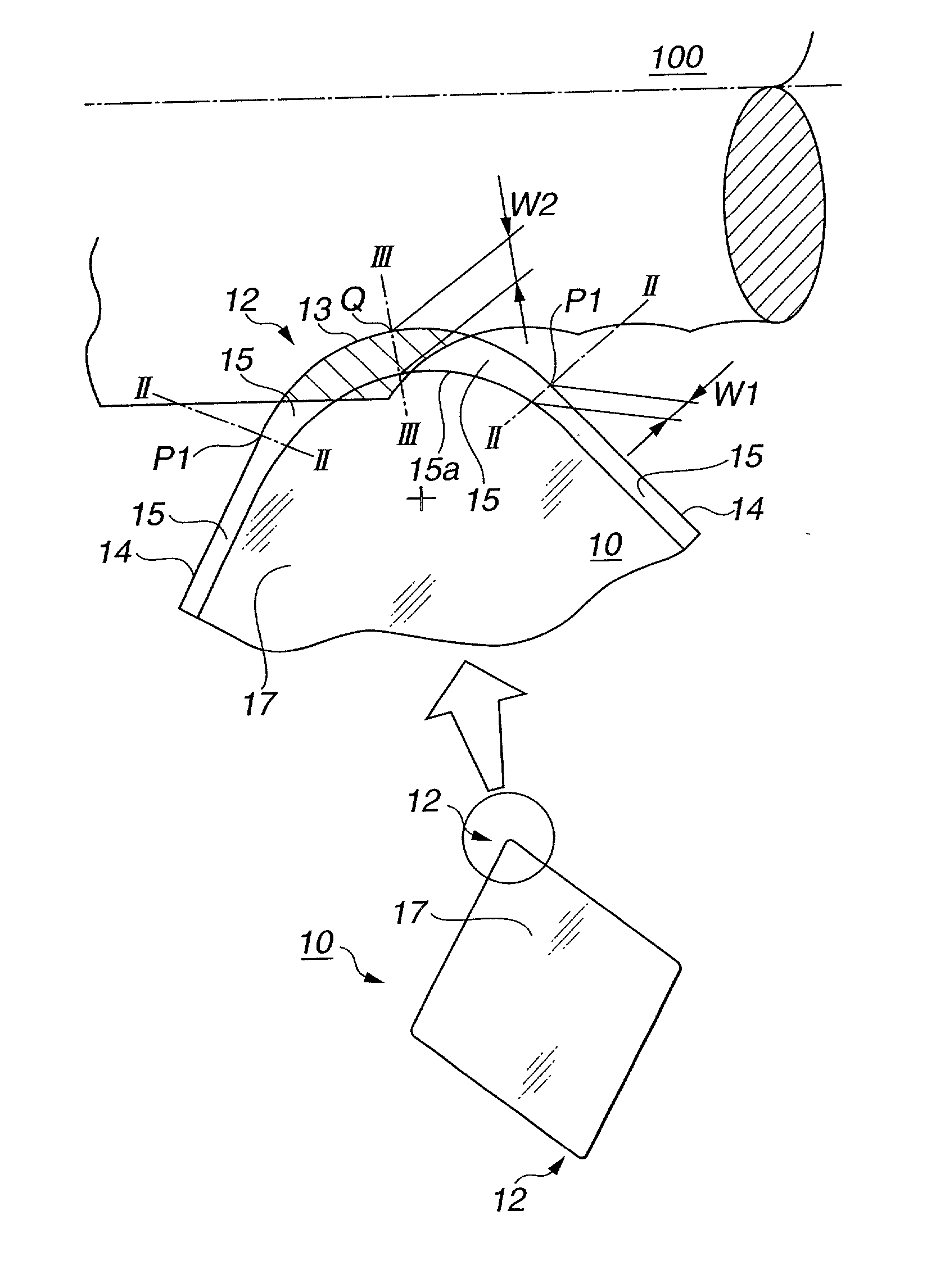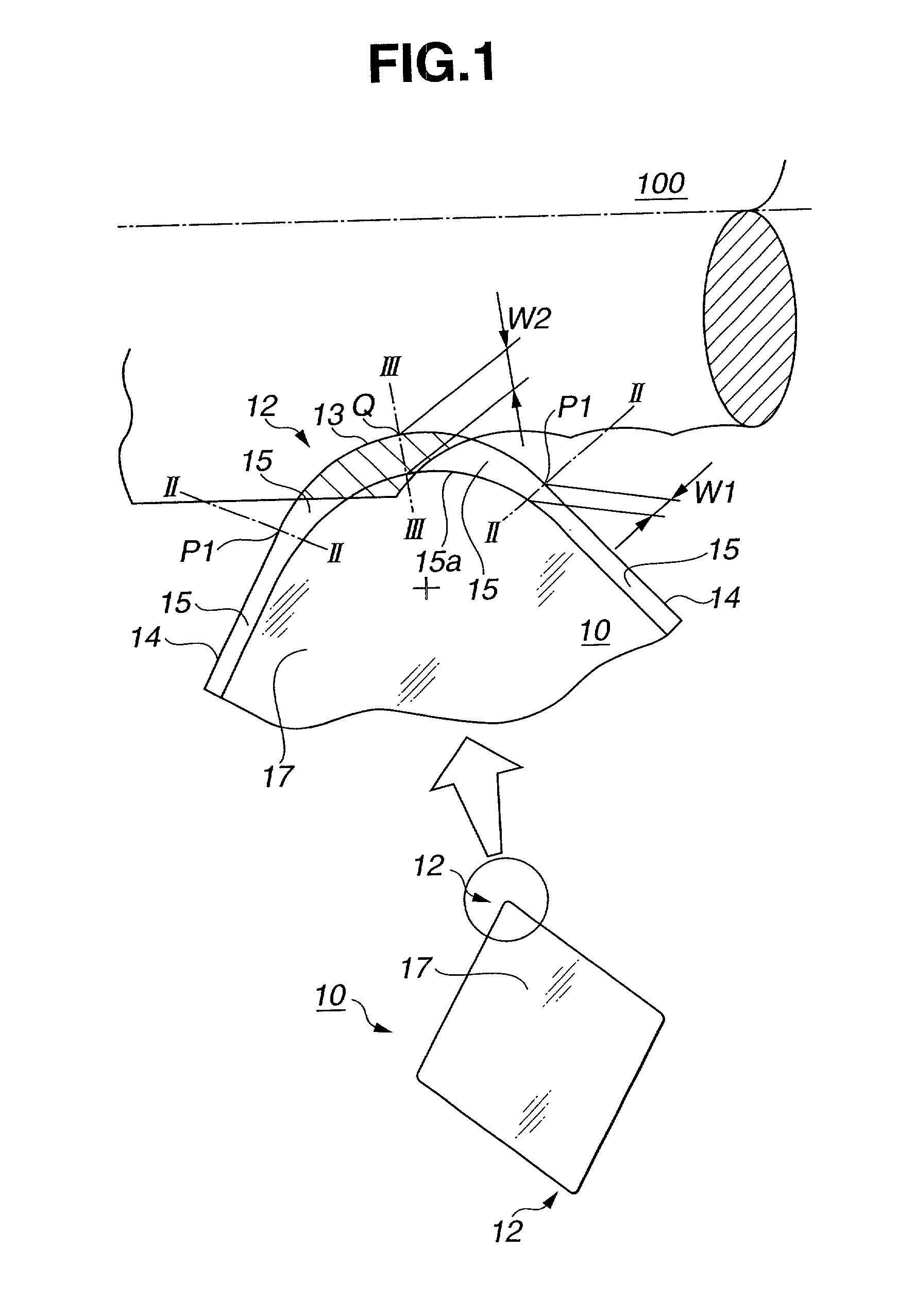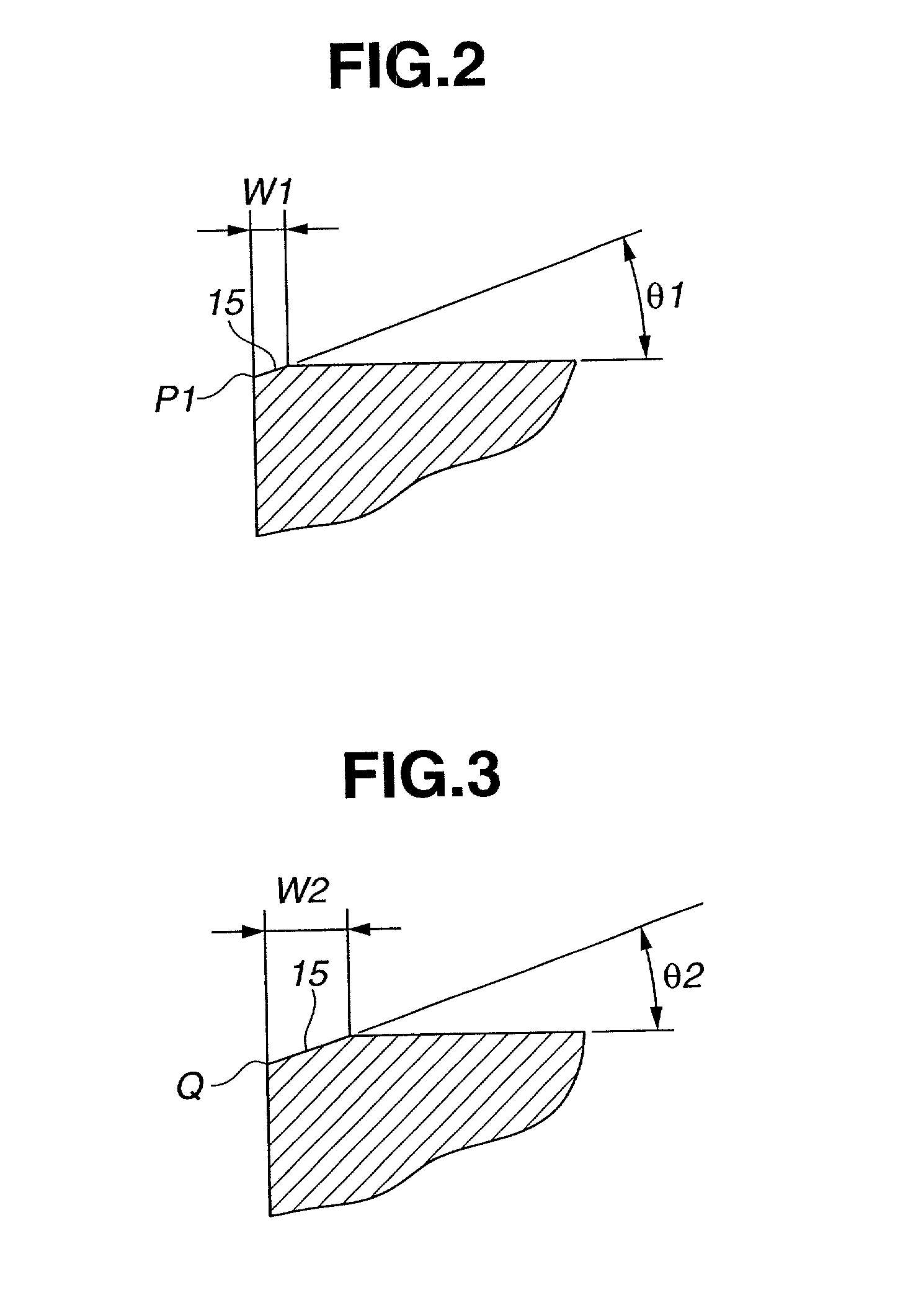Cutting tool
a cutting tool and cutting tool technology, applied in the field of cutting tools, can solve the problems of reducing affecting the cutting tool, and affecting the cutting tool, and achieve the effect of optimizing the width of the chamfer
- Summary
- Abstract
- Description
- Claims
- Application Information
AI Technical Summary
Benefits of technology
Problems solved by technology
Method used
Image
Examples
Embodiment Construction
[0029] Referring first to FIGS. 1 to 3, a cutting tool according to an embodiment of the present invention is generally designated by 10 and adapted to constitute a rhombic indexable insert. The cutting tool 10 is constituted according CNGA120412 specified in ISO (i.e., rhombic insert of negative rake type with a cylindrical fixing hole, apex angle of 80 degrees and nose radius of 1.2 mm) and made of ceramic (Al.sub.2O.sub.3).
[0030] The cutting tool 10, as shown in FIG. 1, has a circular or curved cutting edge 13 at a nose 12 and a pair of straight cutting edges 14, 14 between which the nose 12 is located. The cutting tool 10 further has a chamfer 15 extending along the curved cutting edge 13 and the straight cutting edges 14, 14. The chamfer 15 is shaped so as to have a minimum width W1 (0.05 mm) at a junction P1 (the place indicated by line II-II) of the curved cutting edge 13 and each of the straight cutting edges 14 and a maximum width W2 at a midpoint Q of the curved cutting ed...
PUM
| Property | Measurement | Unit |
|---|---|---|
| width | aaaaa | aaaaa |
| width | aaaaa | aaaaa |
| radius | aaaaa | aaaaa |
Abstract
Description
Claims
Application Information
 Login to View More
Login to View More - R&D
- Intellectual Property
- Life Sciences
- Materials
- Tech Scout
- Unparalleled Data Quality
- Higher Quality Content
- 60% Fewer Hallucinations
Browse by: Latest US Patents, China's latest patents, Technical Efficacy Thesaurus, Application Domain, Technology Topic, Popular Technical Reports.
© 2025 PatSnap. All rights reserved.Legal|Privacy policy|Modern Slavery Act Transparency Statement|Sitemap|About US| Contact US: help@patsnap.com



